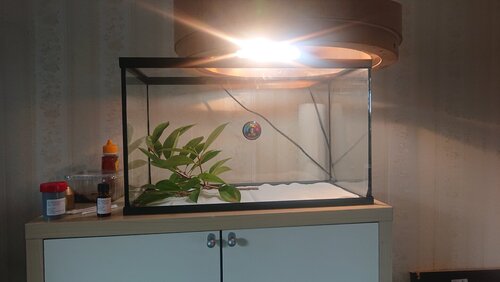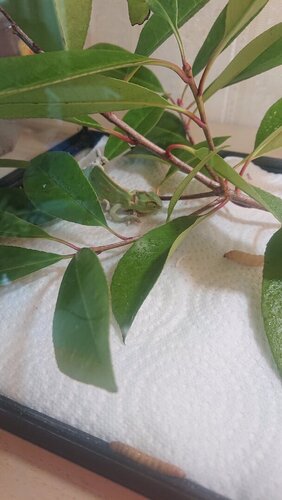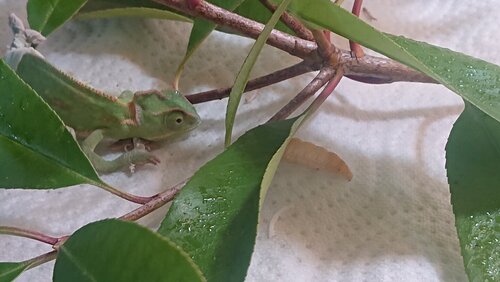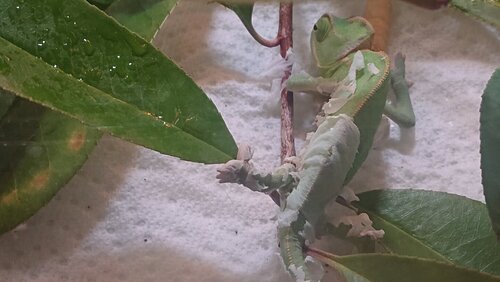Hey guys,
Yesterday I found my Calypatrus on the floor of his exhibit, covered in shed-flakes and colored grey. After a brief visit to a vet this morning, it turned out his left hind-leg is broken. Which I already feared so.
Do you guys have any advice, added to the information I received from the vet? Even though he should have pain, he is pretty calm and his natural green since yesterday evening.
It's a calypatrus male, about 3, maybe 4 months old.
He weighs 6 grams (at the vet)
Not sure about his size, I dont want to bother him too much right now.
If you need any more info or pictures, tell me.
Kind regards,
Danny



Yesterday I found my Calypatrus on the floor of his exhibit, covered in shed-flakes and colored grey. After a brief visit to a vet this morning, it turned out his left hind-leg is broken. Which I already feared so.
- The vet gave me painkillers, that I have to mix with a little honey. She adviced me to give it 5 days, and then 2 days off, and then 5 days again.And vitamines to feed and sprinkle the critters with. I'm not sure what the medicine and vitamines are called, she didnt write it on the tubes they're in.
- She adviced me to rub the medicine/honey a little bit on the nose, so he would eat/lick it off. But the thing is, he won't. At least not when I see it. And I am unable to force-feed him, he is more stubborn than the leopard geckos I'm used to.
- I also moved him to another exhibit, one that is more wide than high, to avoid that he will climb and fall again.
- He won't eat, is that because of the pain, or simply because he is also shedding?
Do you guys have any advice, added to the information I received from the vet? Even though he should have pain, he is pretty calm and his natural green since yesterday evening.
It's a calypatrus male, about 3, maybe 4 months old.
He weighs 6 grams (at the vet)
Not sure about his size, I dont want to bother him too much right now.
If you need any more info or pictures, tell me.
Kind regards,
Danny










